Title Page
Copyright Page
Dedication
Contents
Preface: The Aims of This Edition
Our Debts
I Research, Researchers, and Readers
Prologue: Becoming a Researcher
1 Thinking in Print: The Uses of Research, Public and Private
1.1 What Is Research?
1.2 Why Write It Up?
1.3 Why a Formal Paper?
1.4 Writing Is Thinking
2 Connecting with Your Reader: Creating a Role for Yourself and Your Readers
2.1 Conversing with Your Readers
2.2 Understanding Your Role
2.3 Imagining Your Readers’ Role
★ Quick Tip: A Checklist for Understanding Your Readers
II Asking Questions, Finding Answers
Prologue: Planning Your Project—An Overview
★ Quick Tip: Creating a Writing Group
3 From Topics to Questions
3.1 From an Interest to a Topic
3.2 From a Broad Topic to a Focused One
3.3 From a Focused Topic to Questions
3.4 The Most Significant Question: So What?
★ Quick Tip: Finding Topics
4 From Questions to a Problem
4.1 Understanding Research Problems
4.2 Understanding the Common Structure of Problems
4.3 Finding a Good Research Problem
4.4 Learning to Work with Problems
★ Quick Tip: Manage the Unavoidable Problem of Inexperience
5 From Problems to Sources
5.1 Three Kinds of Sources and Their Uses
5.2 Navigating the Twenty-First-Century Library
5.3 Locating Sources on the Internet
5.4 Evaluating Sources for Relevance and Reliability
5.5 Looking Beyond Predictable Sources
5.6 Using People to Further Your Research
★ Quick Tip: The Ethics of Using People as Sources of Data
6 Engaging Sources
6.1 Recording Complete Bibliographical Information
6.2 Engaging Sources Actively
6.3 Reading for a Problem
6.4 Reading for Arguments
6.5 Reading for Data and Support
6.6 Taking Notes
6.7 Annotating Your Sources
★ Quick Tip: Manage Moments of Normal Anxiety
III Making an Argument
Prologue: Assembling a Research Argument
7 Making Good Arguments: An Overview
7.1 Argument as a Conversation with Readers
7.2 Supporting Your Claim
7.3 Acknowledging and Responding to Anticipated Questions and Objections
7.4 Connecting Claims and Reasons with Warrants
7.5 Building a Complex Argument Out of Simple Ones
7.6 Creating an Ethos by Thickening Your Argument
★ Quick Tip: A Common Mistake—Falling Back on What You Know
8 Making Claims
8.1 Determining the Kind of Claim You Should Make
8.2 Evaluating Your Claim
8.3 Qualifying Claims to Enhance Your Credibility
9 Assembling Reasons and Evidence
9.1 Using Reasons to Plan Your Argument
9.2 Distinguishing Evidence from Reasons
9.3 Distinguishing Evidence from Reports of It
9.4 Evaluating Your Evidence
10 Acknowledgments and Responses
10.1 Questioning Your Argument as Your Readers Will
10.2 Imagining Alternatives to Your Argument
10.3 Deciding What to Acknowledge
10.4 Framing Your Responses as Subordinate Arguments
10.5 The Vocabulary of Acknowledgment and Response
★ Quick Tip: Three Predictable Disagreements
11 Warrants
11.1 Warrants in Everyday Reasoning
11.2 Warrants in Academic Arguments
11.3 Understanding the Logic of Warrants
11.4 Testing Warrants
11.5 Knowing When to State a Warrant
11.6 Using Warrants to Test Your Argument
11.7 Challenging Others’ Warrants
★ Quick Tip: Reasons, Evidence, and Warrants
IV Writing Your Argument
Prologue: Planning Again
12 Planning and Drafting
12.1 Planning Your Paper
12.2 Avoiding Three Common but Flawed Plans
12.3 Turning Your Plan into a Draft
★ Quick Tip: Work Through Procrastination and Writer’s Block
13 Organizing Your Argument
13.1 Thinking Like a Reader
13.2 Revising Your Frame
13.3 Revising Your Argument
13.4 Revising the Organization of Your Paper
13.5 Checking Your Paragraphs
13.6 Letting Your Draft Cool, Then Paraphrasing It
★ Quick Tip: Abstracts
14 Incorporating Sources
14.1 Quoting, Paraphrasing, and Summarizing Appropriately
14.2 Integrating Direct Quotations into Your Text
14.3 Showing Readers How Evidence Is Relevant
14.4 The Social Importance of Citing Sources
14.5 Four Common Citation Styles
14.6 Guarding Against Inadvertent Plagiarism
★ Quick Tip: Indicating Citations in Your Paper
15 Communicating Evidence Visually
15.1 Choosing Visual or Verbal Representations
15.2 Choosing the Most Effective Graphic
15.3 Designing Tables, Charts, and Graphs
15.4 Specific Guidelines for Tables, Bar Charts, and Line Graphs
15.5 Communicating Data Ethically
16 Introductions and Conclusions
16.1 The Common Structure of Introductions
16.2 Step 1: Establishing a Context
16.3 Step 2: Stating Your Problem
16.4 Step 3: Stating Your Response
16.5 Setting the Right Pace
16.6 Organizing the Whole Introduction
16.7 Finding Your First Few Words
16.8 Writing Your Conclusion
★ Quick Tip: Titles
17 Revising Style: Telling Your Story Clearly
17.1 Judging Style
17.2 The First Two Principles of Clear Writing
17.3 A Third Principle: Old Before New
17.4 Choosing between the Active and Passive Voice
17.5 A Final Principle: Complexity Last
17.6 Spit and Polish
★ Quick Tip: The Quickest Revision Strategy
V Some Last Considerations
The Ethics of Research
A Postscript for Teachers
Appendix: Bibliographical Resources
Index


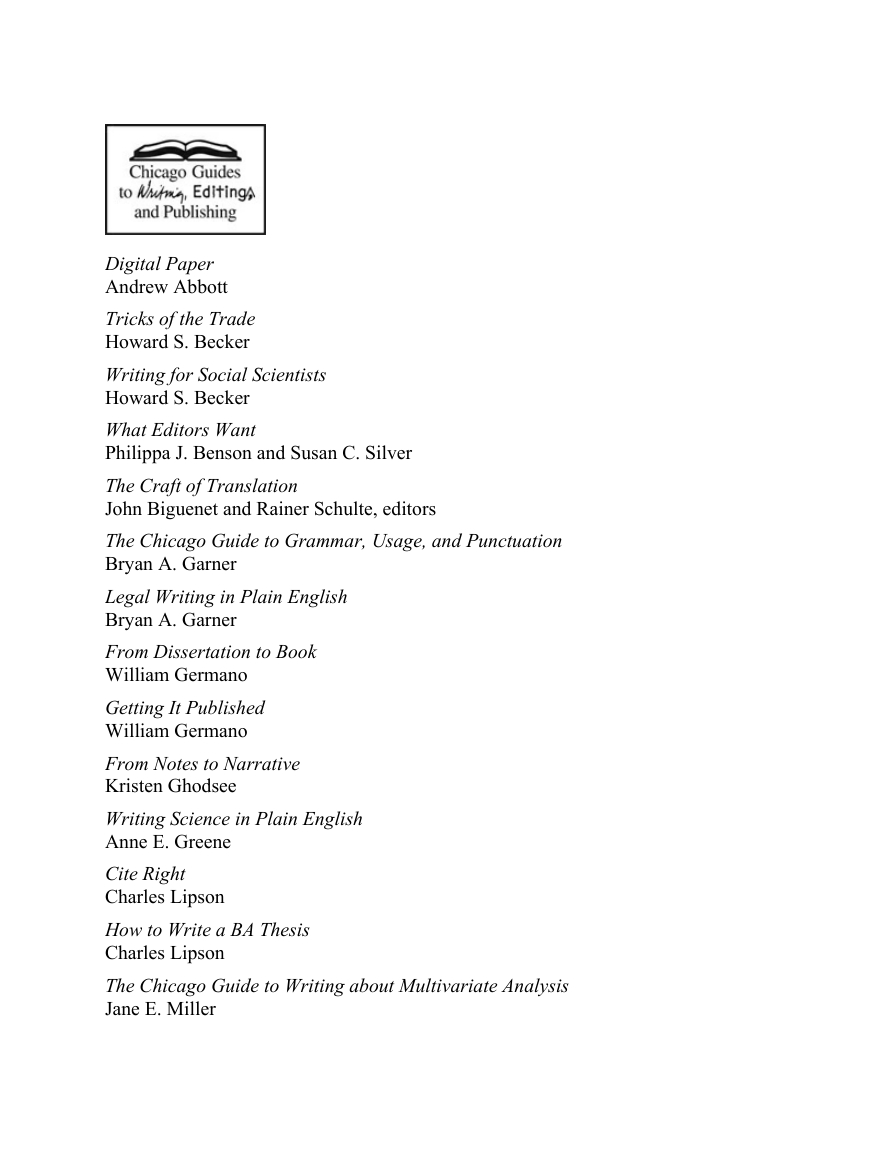
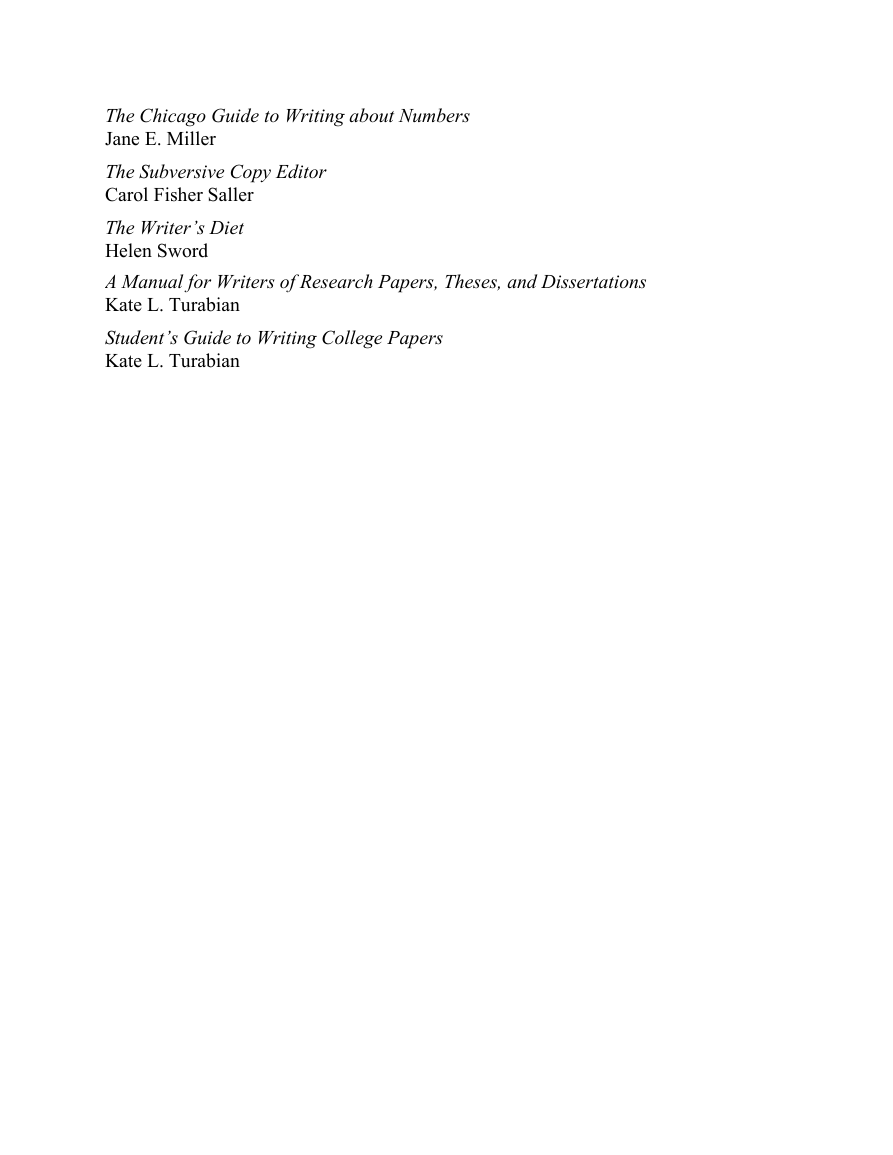
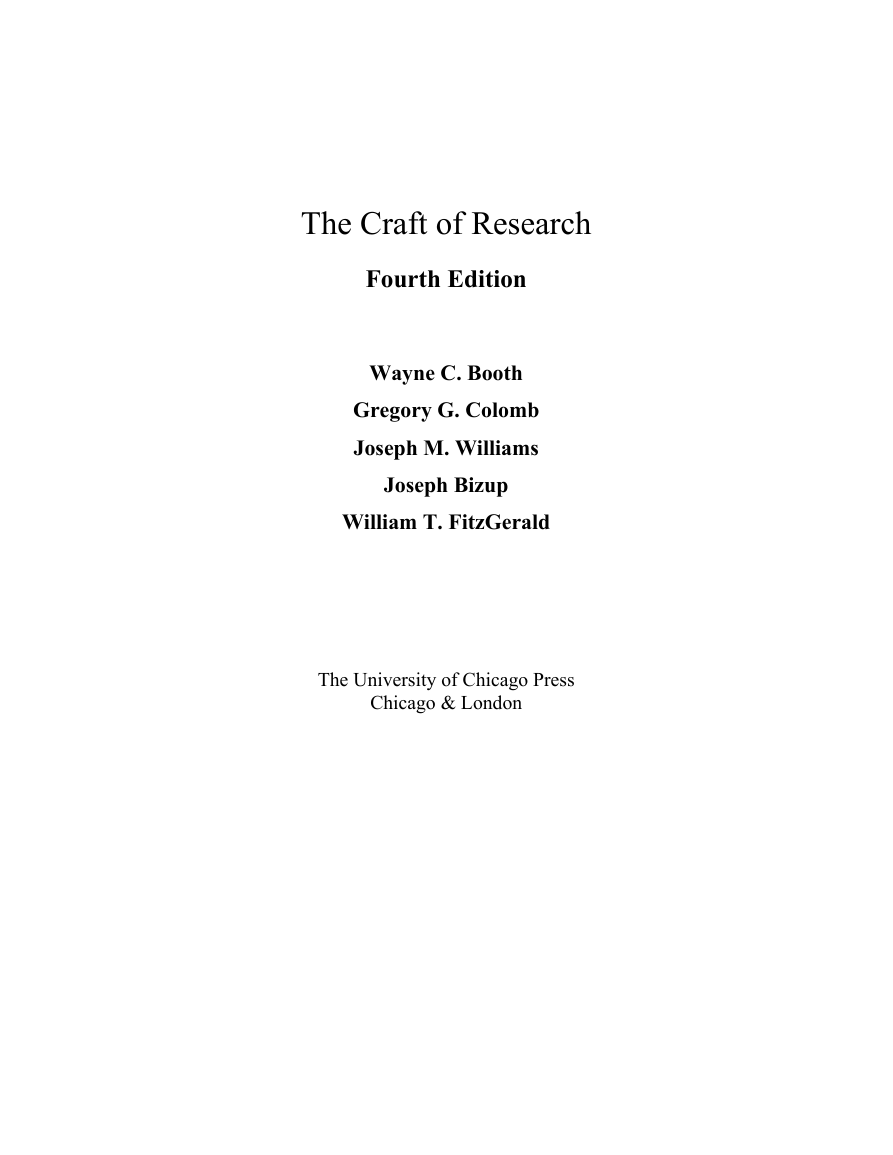
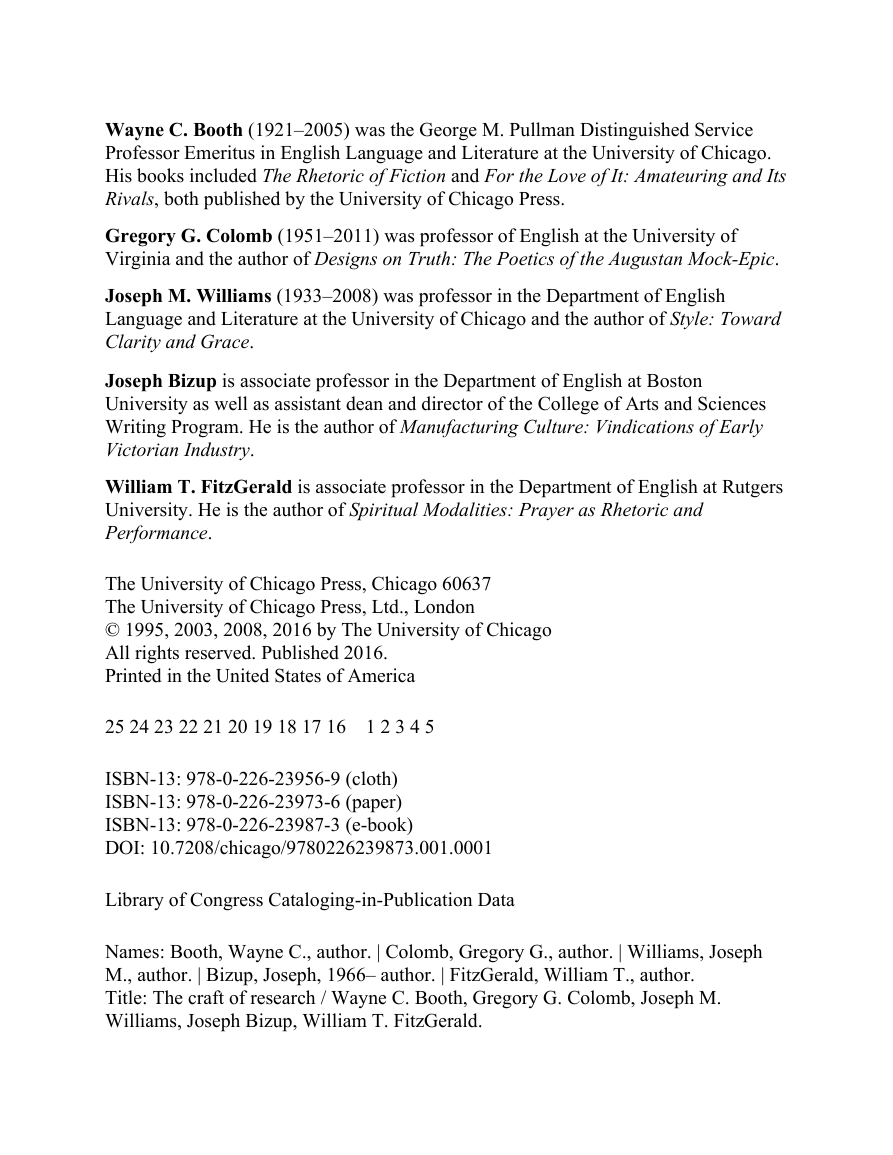
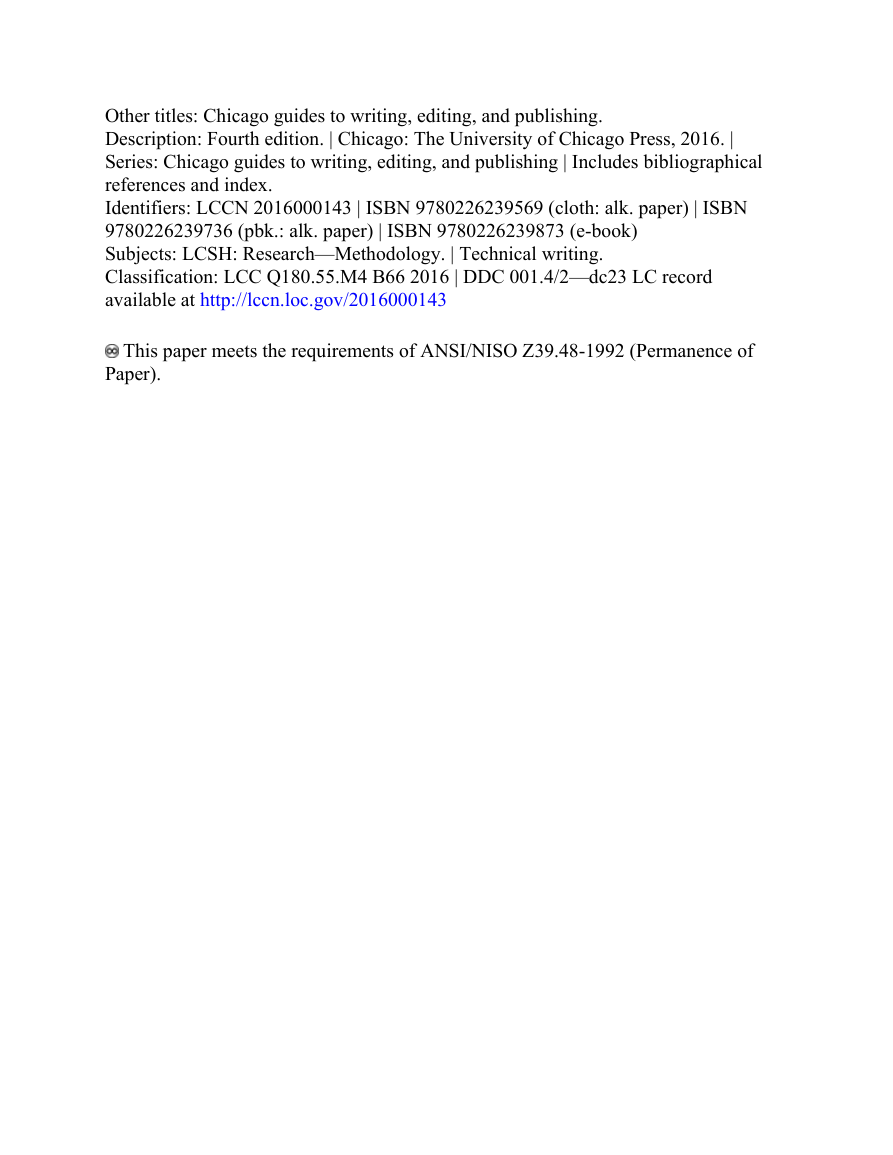
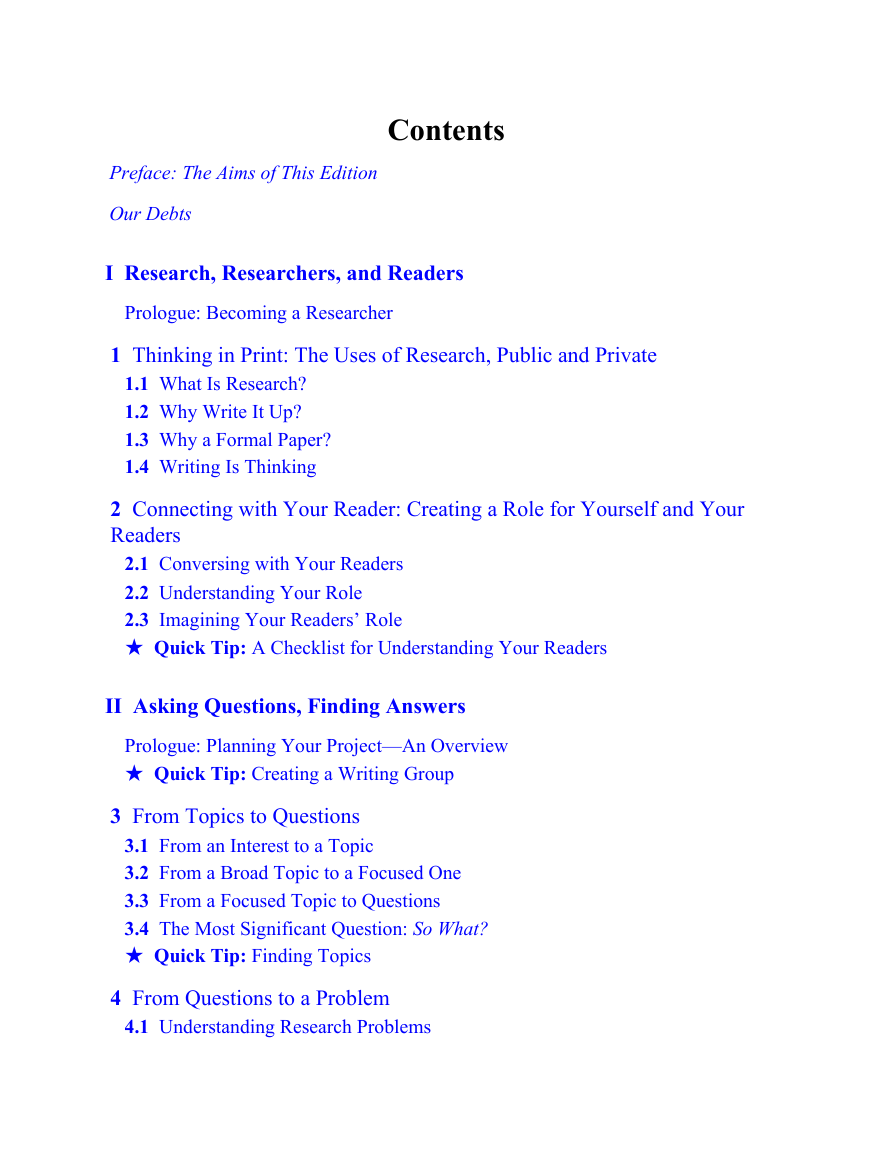








 2023年江西萍乡中考道德与法治真题及答案.doc
2023年江西萍乡中考道德与法治真题及答案.doc 2012年重庆南川中考生物真题及答案.doc
2012年重庆南川中考生物真题及答案.doc 2013年江西师范大学地理学综合及文艺理论基础考研真题.doc
2013年江西师范大学地理学综合及文艺理论基础考研真题.doc 2020年四川甘孜小升初语文真题及答案I卷.doc
2020年四川甘孜小升初语文真题及答案I卷.doc 2020年注册岩土工程师专业基础考试真题及答案.doc
2020年注册岩土工程师专业基础考试真题及答案.doc 2023-2024学年福建省厦门市九年级上学期数学月考试题及答案.doc
2023-2024学年福建省厦门市九年级上学期数学月考试题及答案.doc 2021-2022学年辽宁省沈阳市大东区九年级上学期语文期末试题及答案.doc
2021-2022学年辽宁省沈阳市大东区九年级上学期语文期末试题及答案.doc 2022-2023学年北京东城区初三第一学期物理期末试卷及答案.doc
2022-2023学年北京东城区初三第一学期物理期末试卷及答案.doc 2018上半年江西教师资格初中地理学科知识与教学能力真题及答案.doc
2018上半年江西教师资格初中地理学科知识与教学能力真题及答案.doc 2012年河北国家公务员申论考试真题及答案-省级.doc
2012年河北国家公务员申论考试真题及答案-省级.doc 2020-2021学年江苏省扬州市江都区邵樊片九年级上学期数学第一次质量检测试题及答案.doc
2020-2021学年江苏省扬州市江都区邵樊片九年级上学期数学第一次质量检测试题及答案.doc 2022下半年黑龙江教师资格证中学综合素质真题及答案.doc
2022下半年黑龙江教师资格证中学综合素质真题及答案.doc